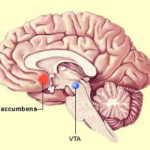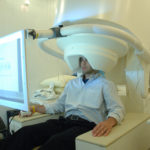
Neuromarketing is a term unfamiliar to most Internet marketers. It represents a shift away from old marketing strategies based on understanding customer behaviors to understanding why customers buy.
For example, walk down the aisle of any supermarket. Market research will tell you which products sell more than others and data analysis will tell you customer gender, age, income and buying habits. Feedback from consumer focus groups and eye-tracking programs will tell you the advantages of products placement and packaging (design, size, color combinations, font style and size).

This is not much different from website designers who use the same elements to attract and hold viewer attention. Or, web analytics where detailed viewer and customer profiles and on-line behavior help to refine a target market.
What Makes Neuromarketing Different?
Neuromarketing looks at the hidden elements in the decision-making process that affect a final purchase choice.
If you were to ask customers about why they purchased a specific item, we would think answers would be logical and reasonable. However, reasons are more likely to be thoughts explaining and validating a choice and not the real “why” behind a choice.
Brain research tells us “choice” registers first on a subconscious level and then at the level of conscious awareness. This means initial decision making is occurring at a deeper brain level and out of conscious awareness.
What neuromarketers want to know is what is triggering this subconscious response first, favorable or unfavorable, that will determine a choice to purchase or not.
Going back to our supermarket example, customers who purchase laundry detergent have their favorites. All laundry detergents get clothes clean, but advertising convinces you that some get clothes cleaner than others.
They can’t. They can give you additives for hard water, enzymes for stains and optical brighteners that improve the appearance. Without these additives, your clothes will still be clean, but not look clean based on what advertising tells you your clothes should look like.
Now, not only should your clothes look clean but they should also smell fresh. Brands that add optical brighteners and fragrances lead you to believe that any extra cost is worth it to guarantee you really do have clean and fresh smelling laundry.

This is physical neuromarketing engaging your brain’s visual perception of “cleanness” and the olfactory sense of “freshness.” Therefore, as you come down the detergent aisle, your brain is already physically primed by past associations and you don’t think twice about looking at other brands.
The real secret of neuromarketing is not just neural associations of physical sensations, but reaching down to your level of your brain’s “nucleus accumbens.”
What Does My “Nucleus Accumbens” Have to Do With It?
Your nucleus accumbens is a small region in each hemisphere located in the front and lower part of your brain. It acts as a conduit center for the emotional sensations of pleasure, reward, and motivation. (red dot area)

By measuring this part of the brain with a fMRI (functional magnetic resonance imagery) researchers can measure positive responses by increased activity and blood flow.

According to Uma R. Karmarkar, PhD., associate professor at Harvard,
“The more desirable something is, the more significant the changes in blood flow in that part of the brain.”
“Studies have shown activity in that brain area can predict the future popularity of a product or experience.”
Major corporations looking for a marketing edge can afford to conduct these expensive brain scans. It will tell them which product qualities will generate a pleasure response that can make a product more likely to be purchased.
While Internet marketers aren’t going to be able to measure blood flow activity response to launching their newest product or service, they can modify their marketing approach to be more effective.
How do I do that?
First, creating a product or service that solves a problem or is a solution that your customer tells you they are looking for is not enough.
Second, what you need is something that solves a problem or offers a solution that also gives pleasure or reward to their nucleus accumbens. The more you stimulates activity and blood flow in the pleasure center the more likely there is a decision to purchase.
Think back to all the laundry detergent advertising you’ve seen on television. Just about every commercial has a story line of a mother smiling and feeling satisfied that her laundry has come out white, bright and smelling fresh. Her nucleus accumbens, pleasure center, is lighting up with the reward of feeling good knowing that she is doing the best for her family. It’s that same feeling that gets triggered in the detergent aisle and makes the purchase of that product predictable.
Third, look at what you’ve written about what your own product or service offers. For example, your benefits may include saving time, making something easier to accomplish, or increasing return on investment. All things that would be a problem solver or solution you would think customers want. And, they even will tell you that is what they are looking for.
Your job is to convince them that you and your product or service is different. Do you throw in add-on bonuses: free consultation call, private Facebook group, webinar series, e-book, etc.?
What if besides those things you offered some brain pleasure.
- Know that after taking the “Anyone Can Be a Dynamic Speaker Course,” every time you come out on stage, you have honored your promise to become a professional speaker.
- Anyone can build a big email list, but we show you how to build an email list of people who are going to open your emails because they are genuinely interested in what you have to say.
- If you can remember the first dollar you every made, then we can help you remember your first on-line sale, your first 3-figure bank deposit, and your first 6-figure business.
The idea of neuromarketing is to build positive emotions and memory connections with customers in order for them to feel more comfortable (find pleasure) in buying from you.
What is it about your product or service that makes a customer happy about buying from you?
Here’s a quick video on how eye tracking works.
bGaze method for Neuromarketing applications from Braingaze on Vimeo.
Resources:
http://www.nmsba.com/what-is-neuromarketing
http://www.forbes.com/sites/hbsworkingknowledge/2013/02/01/neuromarketing-tapping-into-the-pleasure-center-of-consumers/#38fc37d91430
Images:
Pixabay 1093904 – Brain
en.wikipedia.org – MRI
ens commons wikimedia.org – Nucleus Accumbens
Pixabay 1275482 – shopping carts
Pixabay 804811 – laundry
You Can Find Me At -


Dear Joyce,
A great new field that is growing , and thanks for the great article that is helpful and so interesting to learn new tips and way to market. Thank You for sharing an interesting field of practice.
Lori English, MSW
I’m glad you found this helpful Lori. It’s a field to closely watch as advances are happening quickly in research that are then being translated into all forms of marketing.
This is a really terrific way to look at how we present our wares. I’ve heard of it before, but didn’t really know what to do with it. Thanks!
You’ll be hearing more about this Jennifer as it will be definitely changing the way marketing and sales take place. If you ever have any questions about it, always feel free to contact me.
Joyce,
As a brain geek, I loved your article. I am always surprised how much science is out there to determine how the brain works. Thank you for sharing this! 🙂
Glad you enjoyed reading about neuromarketing Liz and to find another brain geek out there.
I recall reading the book NEUROMARKETING by Patrick Renvoise and Christophe Morin, which explained exactly why the primitive brain works the way it does. Learned how we can use the power hidden in our prospect’s brain to get them to buy.
That’s great, Rachel. It’s a growing field and will be affecting marketing more and more as they learn more about brain responses.
Wow. Loved it, and this comment: What you need is something that solves a problem or offers a solution that also gives pleasure or reward… The more you stimulates activity and blood flow in the pleasure center the more likely there is a decision to purchase.” Will be saving and reading this.
Thanks, Jackie. It’s that simple – make the brain feel good.
Love your explanation of nucleus accumbens. As I am redoing my info on my health coaching I have been trying to keep in mind the benefits. Thanks for the reminder.
Your welcome Karen. Reminding readers of the benefits is one of the things that resonate with them early on and keeps them engaged.
Great post and very interesting on what stimulates our brains to buy Joyce 🙂 Awesome tips on how we can use this in our own marketing, thank you for sharing!!
Glad you like the tips, Joan. I know that it makes me more aware of what is really triggering me to make a purchase.
I found the eye tracking video fascinating, Joyce. Thinking about it, I do tend to head to the right shelf where certain products are located and know when the store has changed things around because I register the missing product. The psychology of purchasing is complex. There are courses with tons of bonuses thrown in and yet I won’t purchase them because they don’t trigger the ‘let’s take out the credit card’ effect in me. Then there are those where I don’t care about freebies. I just know I have to sign up. Wow!
All of this helps to understand our own buying habits and how we structure our own marketing material to be more effective. Glad you got so much out of the eye tracking video.
This is so fascinating, and kind of scary the impression it can make on kids! Great tool if used for good!
As with most things, there are two sides. From the science perspective, it explains how the brain is wired and functions. From an advertising and marketing perspective, it’s used to discover what turns the brain on to buy. But, there is also critical judgment. Before you act on a purchase, if you ask if you really need this can make it a better buying decision.
Your articles are fascinating and full of fabulous info. Now I’m thinking how to utilize neuromarketing for our jewelry product. I think we are on the right track showing a necklace with fashion. However, if this alone was all we needed, we would be having a ton of sales. Even when offering discounts, people who admire our jewelry are not yet customers. Any insights for me?
Yes, I have some thoughts and will send you a Facebook message.
Interesting stuff Joyce.. and I can relate to the marketing thought process in the grocery store thing. I always used to tell my kids to be sure they went to the back of the store, for the sales.. and then check out the end caps in the back. Sorry, it was a little off topic. Anyways, interesting stuff.. thanks for sharing!
Joyce – Great article. You know, I wonder if we couldn’t use this same neurotechnology to bolster mental health in our country. I just think this area of study is in its infancy, and shows great promise.
It’s amazing, and a little creepy, to know how easy it is for large companies to get inside our brains and know what will make us want to buy something. Everything you say makes perfect sense, though. Aside from wanting something that gives you a solution, if it makes you feel good you are more apt to buy.
I agree that it does sound creepy,Tami. But they are capitalizing on how the brain is wired. And, we’re wired for pleasure and fear. Then, it’s up to our critical mind if we are going to act on those feelings. Thanks for taking the time to leave a comment.
It really is fascinating how our brains work. As someone who has been in sales, selling personal training packages, I know that the deeper connection you get with your prospective client, the more you can uncover what their struggles are, and then show them how you will solve those problems.. the more apt they are to sign up as well as be committed to their program. I think it is so much easier to do this in person than it is online.
You raise a very good point Lisa. Personal face-to-face interactions are more productive. The brain is also looking to read facial cues and body language as well. It makes thinks more difficult online, but videos and online streaming will start to change that. Thanks for stopping by to comment.
Thanks for sharing the details of neuromarketing. I’ve heard of this before and have noticed an increase in engagement difference with my clients and potential clients.
Sabrina, you’re so smart for noticing engagement differences. Most marketers have only one way of dealing with clients and potential clients. The key is to personalize as much as possible.